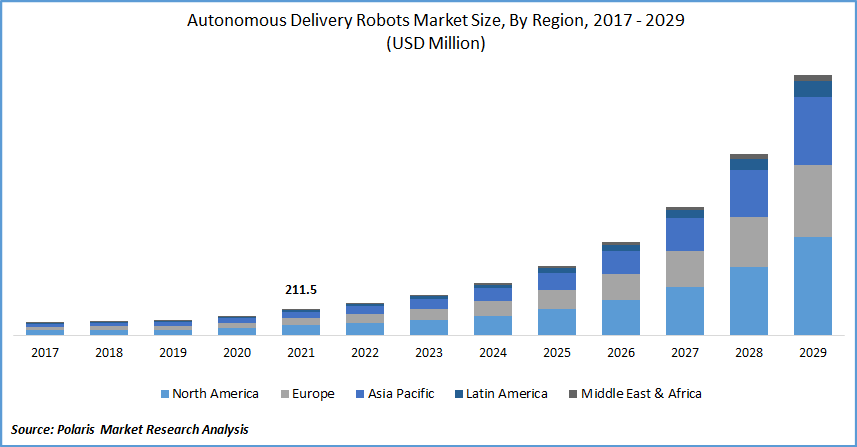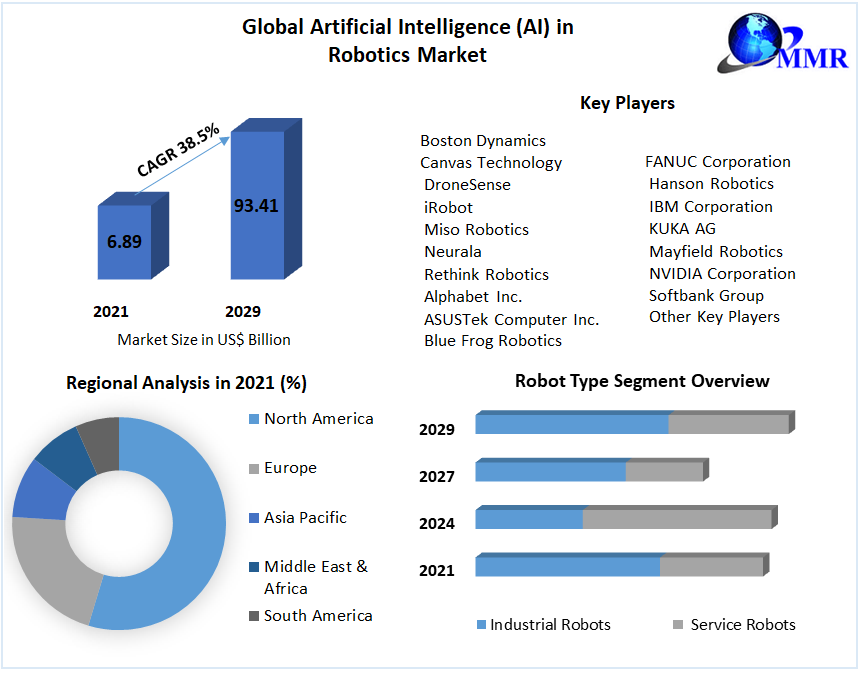
Moonpreneur
Incorporating artificial intelligence (AI) has enabled significant developments in the field of robotics in recent years. AI and robotics have been combined to create intelligent machines that can perform challenging tasks and adapt to changing environments.
Robotics combines electrical engineering, mechanical engineering, and computer science engineering as they contain mechanical construction and electrical components and are coded with programming language.
The complexity of robotics has increased due to such sophisticated functionality. Hence the necessity for AI, as Artificial intelligence allows robots to monitor various aspects in real-time and make judgments. To get a better picture of things, we have to also know about Autonomous Robots and how AI is transforming them! Autonomous robots have the capacity and technology to function independently of human control.

The market for autonomous mobile robots was valued at USD 2.97 billion in 2022, and from 2023 to 2030, it is anticipated to grow at a CAGR of 15.5%. And with the widespread integration of AI, these future robots can be programmed to perform many tasks efficiently and precisely.
What are Robots?
Let’s start with the most basic question, ‘What are robots?’ and what is their functionality? An autonomous machine that can sense its surroundings, conduct calculations to reach judgments, and perform real-world tasks with little or no human intervention is called a robot.
Components of a Robot
A robot is built using several components, such as
- Actuator: The equipment that moves and controls a machine or system is an actuator. By converting energy like electrical, hydraulic, air, etc., it aids in achieving physical movements. Both linear and rotary motion can be produced using actuators.
- Power Supply: It is a piece of electrical equipment that provides power to an electrical load. The power supply’s main job is to convert the electrical current to power the load.
- Electric Motors: These devices transform electrical energy into mechanical energy, which is necessary for providing a rotational movement for the machines.
- Piezo Motors and Ultrasonic Motors: Motors that apply a directed force to an opposite ceramic plate in response to an electric signal are known as Piezo Motors. It facilitates a robot’s movement in the intended direction. These electric motors are the most appropriate for industrial robots.
- Sensors: They offer human-like abilities like sight, hearing, touch, and mobility. Sensors are tools or devices that assist in identifying events or alterations in the environment and provide real-time data to the computer processor. Electrical sensors are an essential component in robotics and artificial intelligence.
What’s an AI?
Artificial intelligence (AI) teaches a computer, a robot, or software to think logically and intelligently, much like a human brain. The development of Artificial Intelligence started with the objective of developing similar intelligence in computers that we find in humans.
AI Concepts Being Used In Robots
1. Computer Vision
Computer Vision is an important AI that uses photos, video clips, and other visual inputs to extract key information that may help guide the robot.
2. Natural Language Processing
To speak to AI robots, NLP (Natural Language Processing) can be employed. Strong human-robot interaction is produced by it. NLP is a particular branch of artificial intelligence that allows people and robots to communicate. The robot can comprehend and imitate human discourse using the NLP approach.
3. Complex event processing (CEP)
Complex event processing (CEP) is a notion that indicates the number of events that are processed simultaneously. CEP is widely used in many fields, including marketing, finance, security, healthcare, etc.
4. Transfer Learning and AI
Transfer learning reuses the pre-trained model for a related problem, and only the last layer of the model is trained, which is relatively less time-consuming and cheaper. In robotics, transfer learning can be used to train one machine with the help of other machines.
5. Concept of Reinforcement Learning
A machine learning technique called reinforcement learning allows an artificial intelligence agent to learn about its surroundings, take actions, and automatically learn from the results of those activities. Additionally, it can learn on its own through hit-and-trail behavior how to behave best when interacting with the surroundings.
The Rise Of AI-Powered Robots
The above concepts and more are being employed to manufacture artificially intelligent robots. Robots operated by artificial intelligence (AI) use various AI technologies, including machine learning, computer vision, RL learning, etc. Typically, most robots lack artificial intelligence; instead, they are programmed to carry out a sequence of repeated actions, and they can complete their tasks without the aid of AI. The utility of these robots is constrained to singular or very few tasks.
When you wish to provide the robot the ability to accomplish more difficult jobs, AI algorithms are required. When a drone is going to run out of power, it may use autonomous navigation to find its way back home or a self-driving automobile may employ a combination of AI algorithms to detect and avoid hazardous road dangers; these are examples of how AI-driven robots demonstrate greater task performance capabilities than conventional ones.

Advantages of AI-Powered Robots
- More beneficial to society as these AI-powered robots can be useful in scenarios where it comes to guiding people or aiding older people.
- AI-powered robots can be immensely helpful in the Agricultural industry, where they’ll be able to reduce a farmer’s workload by keeping a check on soil, as well as the quality of crops, while also performing labor-intensive tasks.
- AI-powered military robots can save lives by replacing troops on the frontline and spying on the enemy using speech and vision detectors.
- AI-powered robots can also be used in environments where humans can’t ordinarily exist, such as volcanoes, deep oceans, extremely cold climates, or space.
- AI Robotics can also be employed in the medical and healthcare sectors because it can carry out complicated operations with a higher risk of human error but with pre-programmed instructions and additional intelligence. Robotics with AI integration could significantly lower the number of casualties.
Incorporating AI and robotics has opened up opportunities and promises to revolutionize industries and transform our lives and work. As technology advances quickly, the impacts of designing and programming robots with AI will be realized soon. It will be crucial to use AI’s capabilities while simultaneously handling associated ethical issues.
Want to make your child future-ready with Robotics? Moonpreneur offers a tailor-made program. Reserve a spot in our free 60-minute workshop today and introduce them to the amazing world of robotics and innovations!
























